MY CLASSICS
Daf P300
Cars
| 15-11-2019
With four episodes about my classics from the Daf factories, I celebrate that 60 years ago that the first Daf passenger car came onto the market. Two weeks ago I wrote about the Daf 55 and what preceded it. Now it is the turn of the all-new second generation Daf 33. Unfortunately, that car was never taken into production. And it got so close...
Revelation
After I discovered the Daf passenger car brand around the age of 13, I wanted to know more about it. In the piece about the Daf 55, I already wrote that I couldn't find much in the village library. Apparently my desire for information was great, because in 1997 I got my parents to set off for Eindhoven for a visit to the Daf Museum. There I saw all the models together, I got to know the work of Charles Burki and I saw scale models in a showcase. Among them were models that never reached the production stage. For a boy going through his adolescence who secretly would love to become a car designer, that's a real revelation, of course.
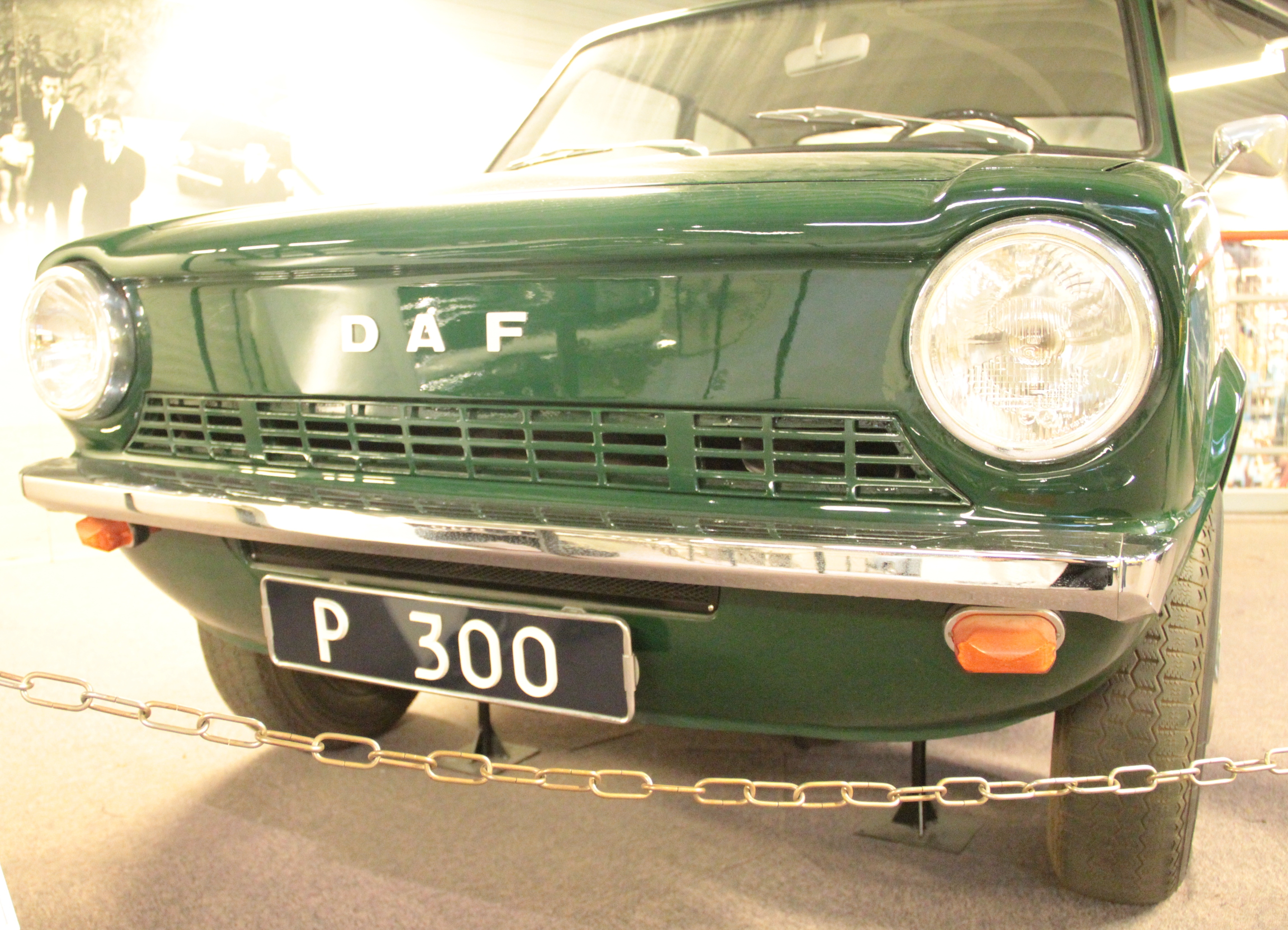
One of the models I got to know at the Daf Museum was the P300. (By the way, I'm not sure if it was already there in 1997, but on a later visit it was anyway, as you can see in the pictures on this page). In 1966, Daf built two models: the Daffodil - known internally as the 32 - and the 44. On the basis of the 44, in 1967 the 55 would come onto the market, but they wanted more. Above the 44/55, Daf wanted a larger model, which I'll come back to in two weeks. Below the 44/55 was the Daffodil '32', a further development of the 1959 600, and so that car was gradually becoming somewhat old-fashioned. That is why they started the development of a successor: the model with code name P300, that was supposed to be released in 1971.
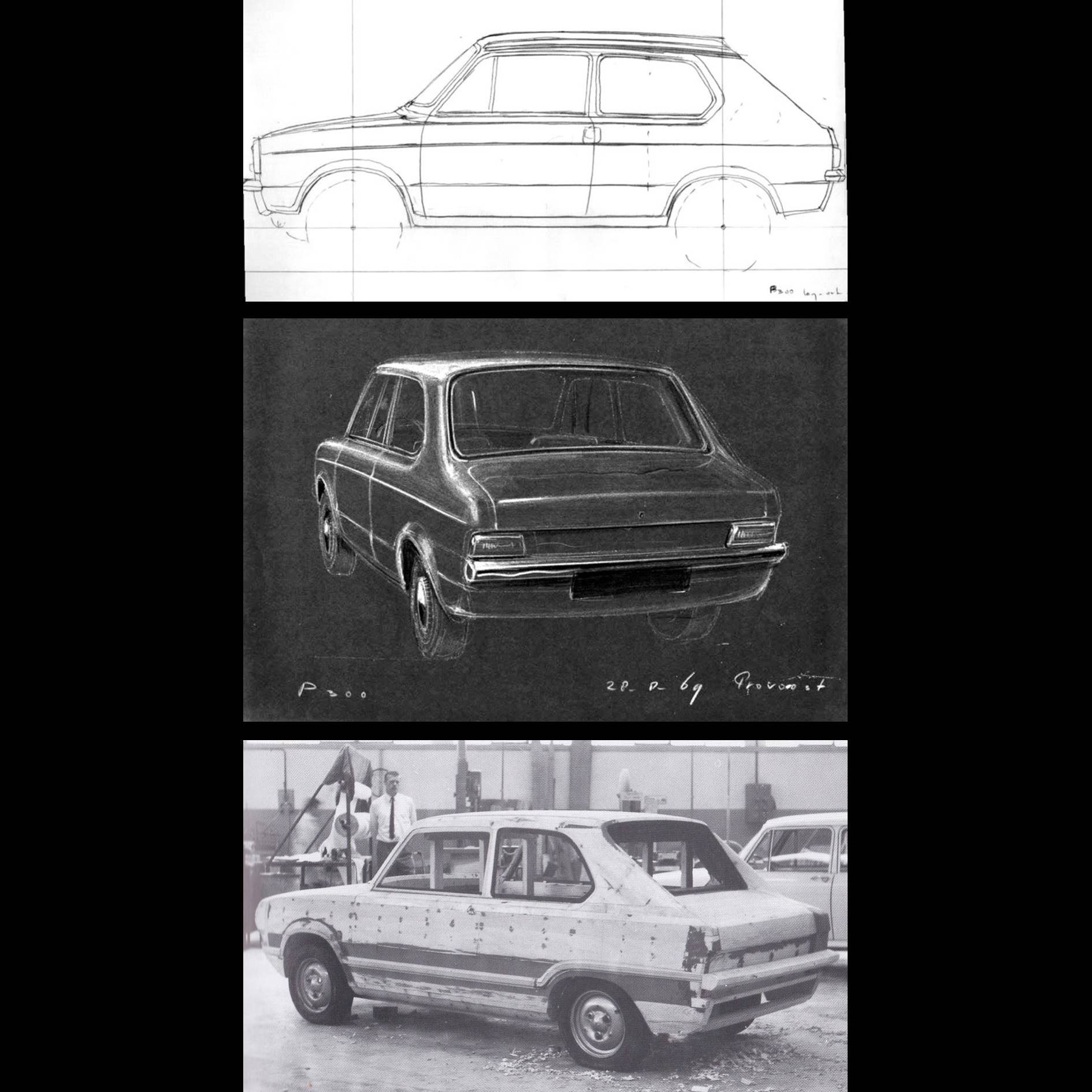
When developing a new model, car manufacturers take no chances, of course. Also at Daf preliminary studies were done. In comparison with the Daffodil, the new car had to become slightly more compact, so that the difference with the 44/55 became bigger. They wanted a somewhat hipper car, to appeal to younger buyers. It also had to be able to keep up more easily in traffic and be more resistant to rust. All this while retaining the low purchase and operating costs associated with a little Daf car and enough difference in price with the 44/55. The preliminary studies showed that developing such a new small model should be feasible, so the design teams started working on that assignment.
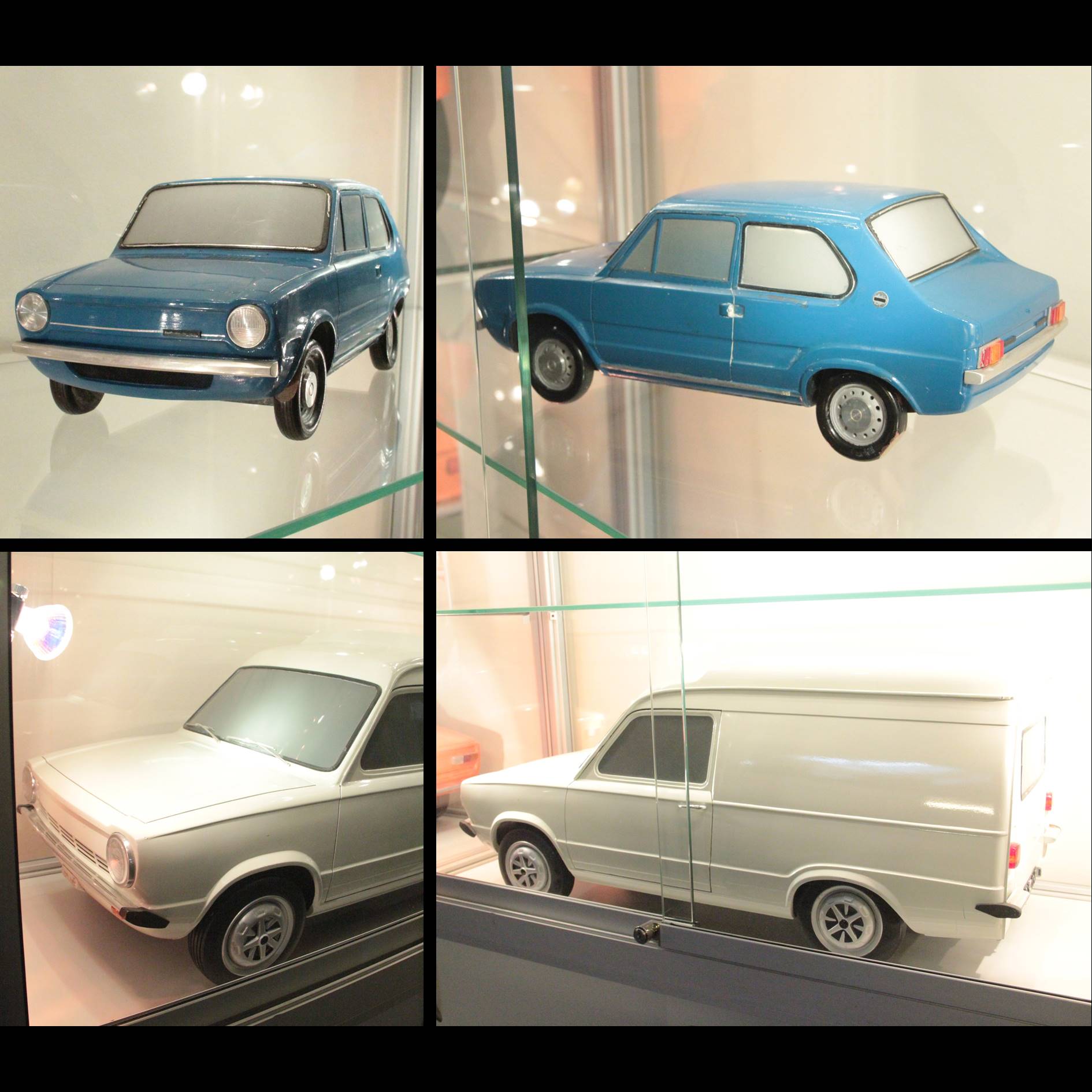
Just as with the 44 and 55, Daf called upon Michelotti for the P300. He first made drawings and a small-scale model, after which Daf ordered a wooden
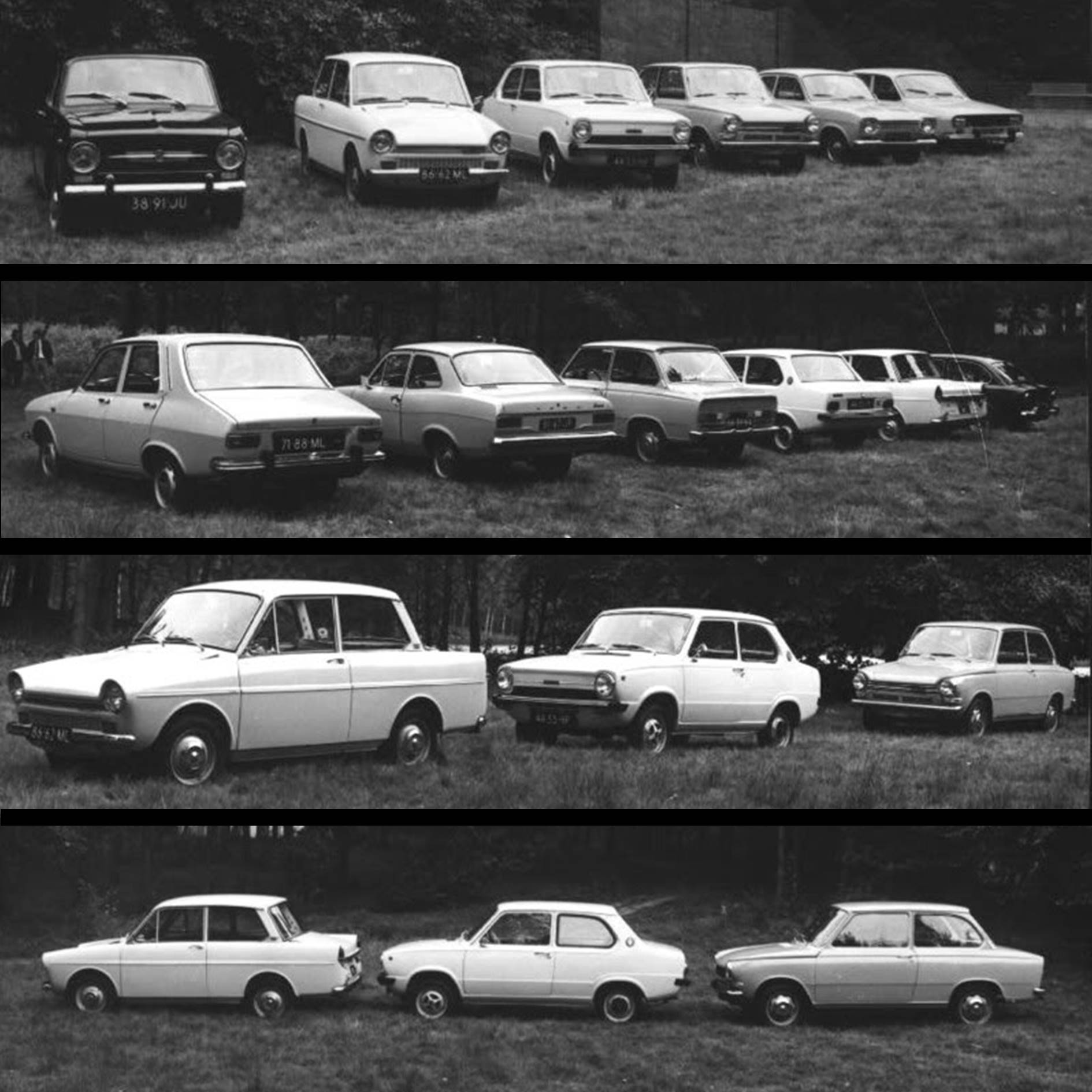
The prototype with which test drives were made on a not yet opened part of the E3 (E34/A67) motorway between Eindhoven and Venlo, was equipped with the 850 cc two-cylinder from the Daf 44. It had 10 hp more than the engine in the Daffodil. Although the use of their own engine seems obvious, other options were also considered. Van der Brugghen mentions the four-cylinder of the British Leyland Motor Company (BLMC) that existed with volumes of 850-1300 cc, the 950 cc four-cylinder from Renault and the 850 cc three-cylinder from Fiat, "but they didn't want to supply to us". The picture above shows the P300 between its intended predecessor, the Daffodil, and the 55, the model it should not get too close to in size. The picture also shows the Fiat 850, Ford Escort and Renault 12. The Fiat would become a direct competitor for the P300. The Renault 12 and Ford Escort are clearly larger cars with larger engines, so I suspect that they are mainly there because of the modern design.
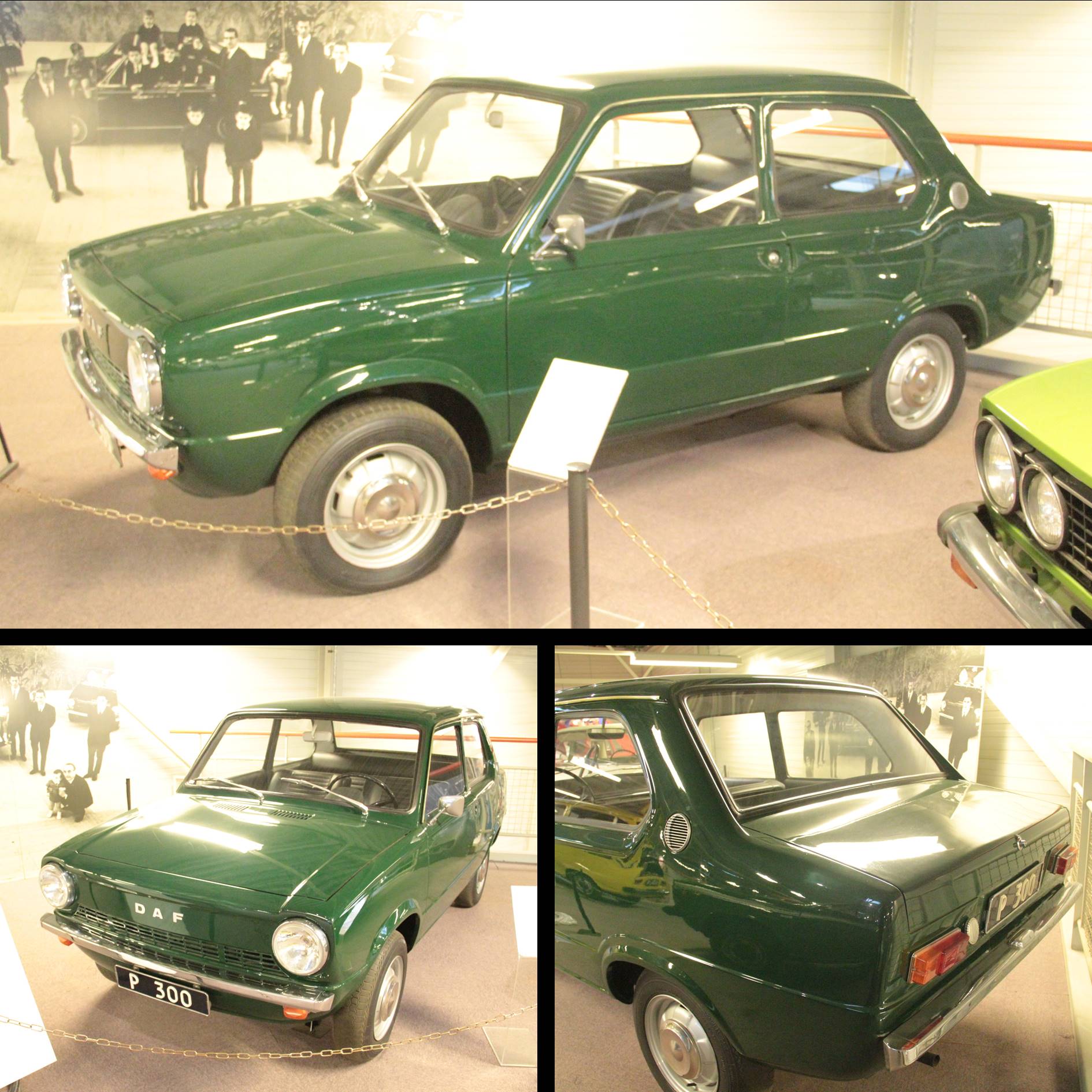
No matter how promising it all looked, in the end the model turned out to become too expensive. The price of the P300 would be too close to that of the 44/55, so the project was stopped after more than three years. From 1967 the Daffodil, with some minor changes, was sold as Daf 33. In 1974 the last 33 drove out of the factory, without a successor. After 312,367 copies, the production of the smallest Daf passenger cars, from the 600 to the 33, stopped. With 131,618 cars produced in eight years, the 33 was quite successful, especially for a fairly young car brand that was active in only a few countries. That of course doesn't take away from the fact that it's a great pity the P300 never reached the production stage. Because it looked much more modern than the Daffodil, the car could have given the image of the Daf cars a positive boost. And I imagine the 1973 oil crisis would have increased the demand for a modern, efficient family car. But of course, Wim van Doorne was not yet aware of that coming crisis when he pulled the plug from project P300 in 1970. Yet all the work on the P300 was not entirely useless in the end. In the design of the Daf-that-never-was-released-as-the-new-33 you can already recognize the shape of the larger Daf, which was known internally as P900...
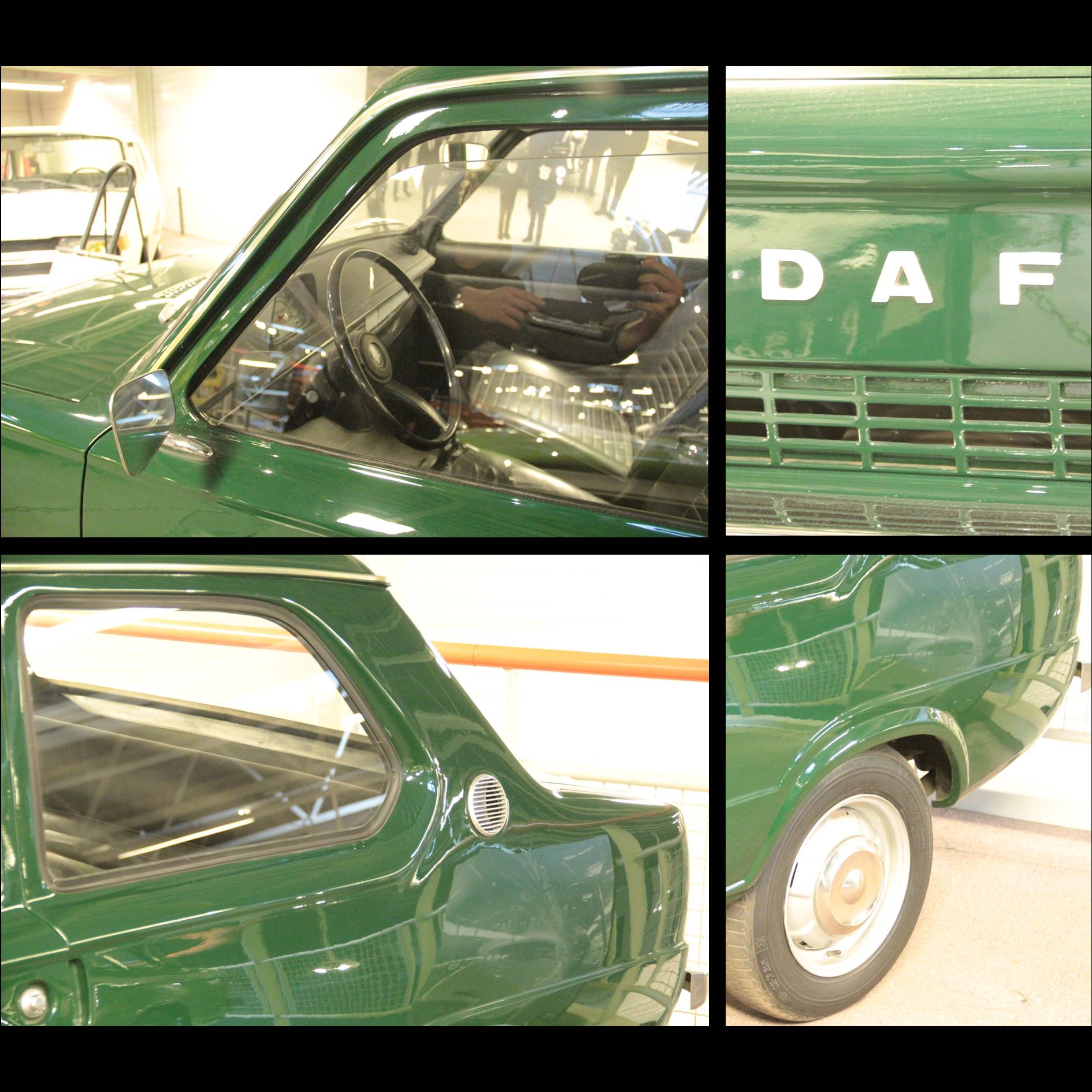
Revelation
After I discovered the Daf passenger car brand around the age of 13, I wanted to know more about it. In the piece about the Daf 55, I already wrote that I couldn't find much in the village library. Apparently my desire for information was great, because in 1997 I got my parents to set off for Eindhoven for a visit to the Daf Museum. There I saw all the models together, I got to know the work of Charles Burki and I saw scale models in a showcase. Among them were models that never reached the production stage. For a boy going through his adolescence who secretly would love to become a car designer, that's a real revelation, of course.

Daf P300
A new small DafOne of the models I got to know at the Daf Museum was the P300. (By the way, I'm not sure if it was already there in 1997, but on a later visit it was anyway, as you can see in the pictures on this page). In 1966, Daf built two models: the Daffodil - known internally as the 32 - and the 44. On the basis of the 44, in 1967 the 55 would come onto the market, but they wanted more. Above the 44/55, Daf wanted a larger model, which I'll come back to in two weeks. Below the 44/55 was the Daffodil '32', a further development of the 1959 600, and so that car was gradually becoming somewhat old-fashioned. That is why they started the development of a successor: the model with code name P300, that was supposed to be released in 1971.

Designs and a mockup for the P300
Preliminary studiesWhen developing a new model, car manufacturers take no chances, of course. Also at Daf preliminary studies were done. In comparison with the Daffodil, the new car had to become slightly more compact, so that the difference with the 44/55 became bigger. They wanted a somewhat hipper car, to appeal to younger buyers. It also had to be able to keep up more easily in traffic and be more resistant to rust. All this while retaining the low purchase and operating costs associated with a little Daf car and enough difference in price with the 44/55. The preliminary studies showed that developing such a new small model should be feasible, so the design teams started working on that assignment.

Scale models of the P300 and a P300 delivery van
From drawing to prototypeJust as with the 44 and 55, Daf called upon Michelotti for the P300. He first made drawings and a small-scale model, after which Daf ordered a wooden
mockupa non-working model
in 1:1 scale in 1969. The shape of the new model gradually became clear. The car was 15 cm shorter than the Daffodil, but had a 5 cm longer wheelbasethe distance between the center of the front and rear axle
of 2.10 meters. In this way they hoped to be able to create a slightly more spacious interior. To make the trunk easily accessible, the rear window was a bit steeper than the C-pillars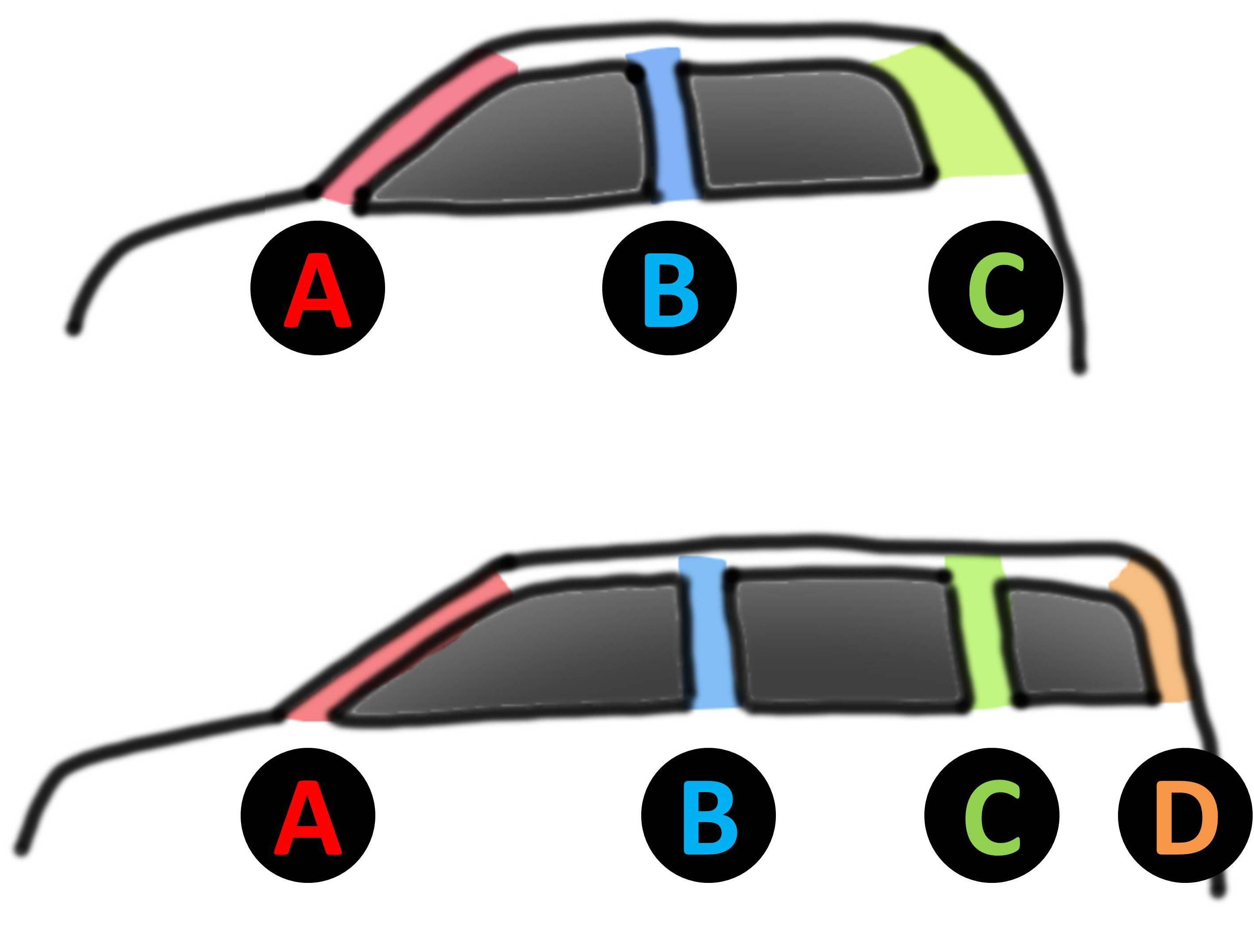
, so that the boot lid could be a little larger. In 1970 Michelotti was commissioned by Daf to make two steel prototypes: one for test drives and wind tunnel tests, the other for experiments with the interior.

Top photo of ref.: Fiat 850, Daf Daffodil, Daf P300, Daf 55, Ford Escort, Renault 12
Possible enginesThe prototype with which test drives were made on a not yet opened part of the E3 (E34/A67) motorway between Eindhoven and Venlo, was equipped with the 850 cc two-cylinder from the Daf 44. It had 10 hp more than the engine in the Daffodil. Although the use of their own engine seems obvious, other options were also considered. Van der Brugghen mentions the four-cylinder of the British Leyland Motor Company (BLMC) that existed with volumes of 850-1300 cc, the 950 cc four-cylinder from Renault and the 850 cc three-cylinder from Fiat, "but they didn't want to supply to us". The picture above shows the P300 between its intended predecessor, the Daffodil, and the 55, the model it should not get too close to in size. The picture also shows the Fiat 850, Ford Escort and Renault 12. The Fiat would become a direct competitor for the P300. The Renault 12 and Ford Escort are clearly larger cars with larger engines, so I suspect that they are mainly there because of the modern design.

The P300 in the Daf Museum (10-2018)
No new 33No matter how promising it all looked, in the end the model turned out to become too expensive. The price of the P300 would be too close to that of the 44/55, so the project was stopped after more than three years. From 1967 the Daffodil, with some minor changes, was sold as Daf 33. In 1974 the last 33 drove out of the factory, without a successor. After 312,367 copies, the production of the smallest Daf passenger cars, from the 600 to the 33, stopped. With 131,618 cars produced in eight years, the 33 was quite successful, especially for a fairly young car brand that was active in only a few countries. That of course doesn't take away from the fact that it's a great pity the P300 never reached the production stage. Because it looked much more modern than the Daffodil, the car could have given the image of the Daf cars a positive boost. And I imagine the 1973 oil crisis would have increased the demand for a modern, efficient family car. But of course, Wim van Doorne was not yet aware of that coming crisis when he pulled the plug from project P300 in 1970. Yet all the work on the P300 was not entirely useless in the end. In the design of the Daf-that-never-was-released-as-the-new-33 you can already recognize the shape of the larger Daf, which was known internally as P900...

Details of the Daf P300
MY CLASSICS
In the My classics section, I add regularly a model to my digital collection of classics. For that, I select cars whose design appeals to me or evokes memories. So nostalgia, and very subjective. Hence the section title: my classics.
In the next episode: the Daf that wasn't called Daf...
Sources
- Brugghen, J. van der. (1988) Dertig jaren Nederlandse personenwagens; 1958-1988. Helmond: Volvo Car b.v.
- Haakman, J. (2006) Onschatbare Klassieker; Jaarboek 17-2007. Huizen: Haakman BV.
- Lange, J. de. (1997) Dafjes. Rijswijk: Uitgeverij Elmar B.V.
- Zeeuw, J. de. (red.). (2005) Ongekend talent; De Daf personenwagen. Daf Club Nederland
The photos in the Daf Museum I made myself. Unfortunately, I was unable to trace the source of the uncredited photos. I apologize to potential rightful claimants and request them to contact me.
